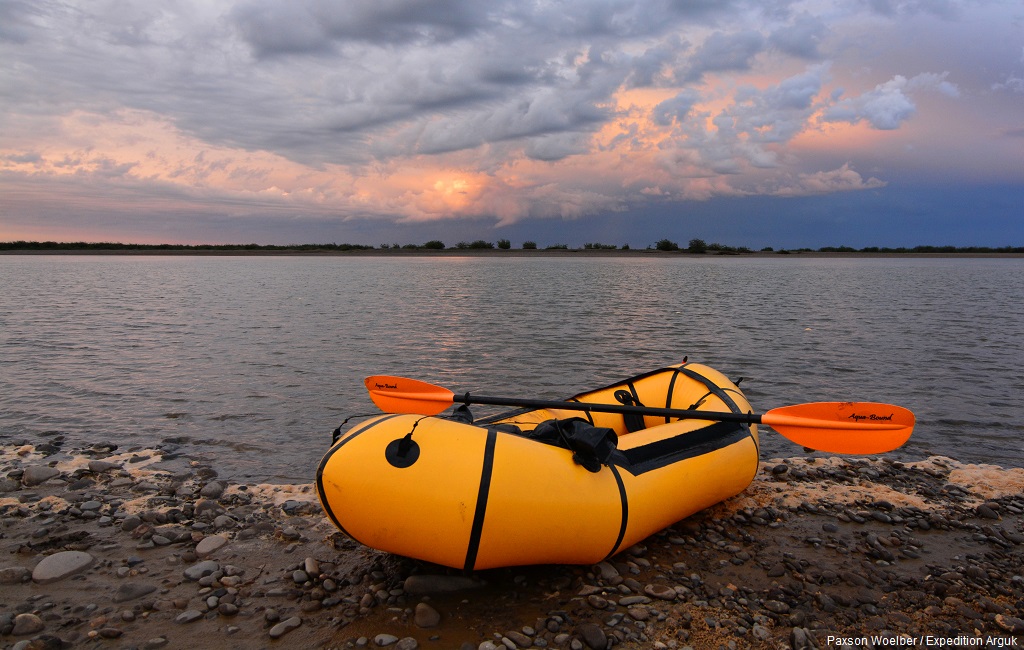Wild And Remote, Alaska’s Western Arctic Is Nonetheless At Risk

Tucked away in the northwest corner of Alaska, the National Petroleum Reserve-Alaska (Reserve) is a hidden jewel overflowing with life and jaw-dropping vistas.
The Reserve is America’s largest single unit of public lands, spanning nearly 23 million acres across the western North Slope of Alaska. Despite its large size, the Reserve’s low profile has concealed the fact that the area’s wilderness and wildlife values are at risk – both from development on the ground in Alaska and legislative proposals on Capitol Hill.
Teshekpuk Caribou, northeast National Petroleum Reserve in Alaska. (Bob Wick, Bureau of Land Management)
The most obvious risks are from on-the-ground development, and a Trump presidency could not only expedite production but roll back critical protections instituted under the Obama administration. And legislation has been introduced in the current Congress that would be incredibly damaging to the people and wildlife that call the Reserve home.
Senator Lisa Murkowski (R-AK) has had a busy summer introducing a number of bills targeting public land and waters across Alaska, including the Alaska Native Claims Settlement Improvement Act, S. 3273, in June 2016. Section 7 of that bill would provide CIRI – an Alaska Native regional corporation based in south central Alaska – with the ability to select 43,000 acres of land in Alaska from federal public lands across the entire state, including the Reserve. Nothing in the bill restricts CIRI from selecting lands that have already been identified as special due to their natural values, or numerous other areas protected because of historical, cultural or ecological importance. That means that the five Special Areas in the Reserve, including lands within the Teshekpuk Lake Special Area and the Colville River Special Area, would be at risk. These areas were identified for their exceptional wildlife value are currently closed to oil and gas leasing under the Reserve’s management plan. And once conveyed to CIRI, resource development activities would be near certain.
Grizzly Bear on the Anaktuvuk River, just east of the Reserve. (Expedition Arguk)
But that isn’t the only legislation with the potential to negatively affect the people and wildlife that call the Reserve home. Senator Murkowski also introduced S. 3203, the Alaska Economic Development and Access to Resources Act, on July 13, 2016, a bill that would, in part, require at least one lease sale in the northeast portion of the Reserve, including critical environmental areas near Teshekpuk Lake. Teshekpuk Lake is the largest lake in Arctic Alaska, and provides important habitat for many threatened species of migratory birds. Teshekpuk Lake and the surrounding area is also important to local communities, who rely on wildlife in the area as a subsistence resource.
These bills are part of a suite of dangerous bills and riders introduced by the Alaska delegation that together serve as an all-out attack on the integrity of public lands and waters in Alaska.
Part of the Alpine Oil Field, North Slope, Alaska. (Expedition Arguk)
Meanwhile, the on-the-ground development slowly but surely continues to push forward. ConocoPhillips’ Colville Delta 5 (CD5) project began drilling in August of last year, and in October the company announced that the drill site had begun producing oil. The Colville Delta infrastructure has now become the staging area for additional development projects: the Greater Mooses Tooth Unit-1 project (GMT1) owes its existence to the completion of CD5, and the approval of GMT1 has made possible the proposed Greater Mooses Tooth Unit-2 project (GMT2). The GMT1 project will include a gravel drilling pad, an eight-mile road, plus pipeline and associated facilities for nine initial development wells. Construction on GMT1 could begin in 2017.
The GMT2 project would allow even more development through the Reserve’s sensitive wetlands and tundra, effectively doubling the size of the Greater Mooses Tooth footprint. And the GMT1 and GMT2 projects, set to be constructed just a short distance away from the Teshekpuk Lake and Colville River Special Areas, lands recognized for their conservation values and withdrawn from leasing, could be just the beginning. In a recent op-ed in The Hill, photographer and restoration ecologist Dave Shreffler wrote:
BLM recently referred to GMT1 as “the first of several development projects that are likely to occur in the region over the next several decades.” BLM is preparing to allow full-bore development. Drill baby drill. Tooth after tooth. Without the strongest possible protections in place for the Reserve’s protected special areas, this is a dangerous path from which BLM cannot go back. There’s simply no way to recover this fragile landscape once widespread industrialization occurs.
A large group of white-fronted geese on a lake just east of Teshekpuk. (Florian Schulz / www.visionsofthewild.com)
The Reserve’s wilderness and wildlife values are unmatched. It is home to two major caribou herds; high concentrations of raptors; millions of migratory birds; tens of thousands of molting geese; polar bears, beluga whales and other marine mammals; plus, vast wilderness landscapes and wild rivers. This December, the Bureau of Land Management will hold its annual oil and gas lease sale for the Reserve, and it’s critical that any future decisions for development in the Reserve result in the smallest possible environmental footprint, minimize cumulative impacts of future development, and that protective measures in place for the surrounding communities, the region’s wildlife, and the Special Areas within close proximity to the development.




